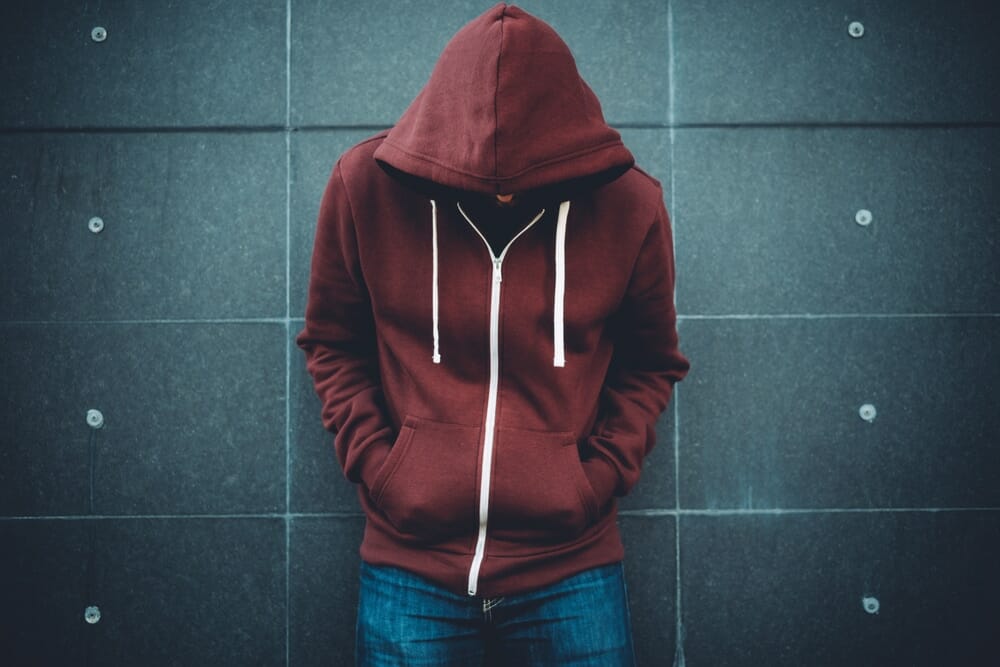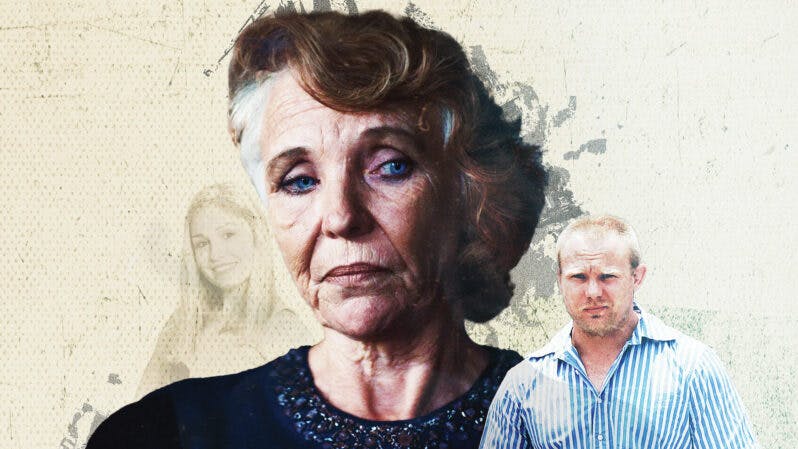
30 November 2018
The devil in our devices
Social media can bring people together – but it can also be a tool to belittle, intimidate and harass. What is cyberbullying, and what can be done about it?
The Girl From St Agnes, Showmax’s first original drama series, will leave many parents feeling uncomfortable.
Cellphones ping endlessly and social media notifications flicker across their screens. The contents of those messages are chilling; the conversations between the students very familiar.
“Can I tag you? You have more followers than I do”.
Chances are, you’ve probably heard this line in passing. The social media age and increased internet access means we are constantly connected. In many ways, this is good. You don’t need to drive to collect your teenager from a party and if you want to know what time they’ll be home, you can reach out easily.
But there is a darker side, too. With our lives publicly available and cellphone technology evolving far beyond the quaint old days of MMS, private information can be distributed with just a few thumb taps.
Cyberbullying is on the rise
Teenagers are vulnerable and, as the story of The Girl From St. Agnes reveals, bullying, especially cyberbullying, is on the rise. Victims sometimes aren’t aware that they are being targeted. Others simply stand by and watch.
Psychotherapist Stella O’Malley, who authored the book Bully-Proof Kids, notes that it’s a group effort to create safe space for teenagers. Even if a parent has no worries about their child being a victim or a perpetrator, they should not be a bystander.
“Persuading bystanders to become ‘upstanders’ would change any bullying problem into a more manageable but difficult situation instead of the horrendous epidemic that it is today,” O’Malley says.
For direct engagement with children, she says communication lines must be clear.
“The higher the quality of the question, the higher the quality of the answer you can expect, and so open-ended questions such as: ‘What do you do at lunch-time?’ can lead to further conversation easier than closed, yes-or-no, questions such as: ‘Did anybody upset you today?’” she adds.
Victims should feel empowered to report intimidation and be sure that they will be protected from any further trauma. Being informed about the course of action is critical.
Because despite awareness around cyberbullying being higher than ever, intimidation is getting worse.
In 2018, the Ipsos Global Advisor study (carried out in 28 countries, including South Africa), found that awareness had increased by nine percent compared to 2011. South Africa was second on the list when it came to awareness around bullying.
Another study conducted by YouGov in 2015 found that South Africa ranked fourth globally for cyberbullying. It found that one in five South African teenagers had been a victim, while 84% knew someone who has been a victim of cyberbullying.
Understandably, then, most South African parents feel that current anti-bullying measures aren’t up to scratch.
Reporting bullying anonymously
In the fight about bullying that relies on tech, it’s only fitting that tech be employed as part of the solution. Developed locally, The Guardian App is aimed at giving victims a safe, easy way to report incidences of bullying and violence, or any other suspicious or anti-social behaviour at schools.
Marc Hardwick, a former cop with the Child Protection Unit, started The Guardian as a way to help abused and victimised children and adults. The mobile app is just one arm of the organisation, which also investigates crimes against children and helps schools develop and implement policies around these issues.
Schools can register and download the app, designating a teacher or counsellor to receive anonymous reports. Once a report is receive, the teacher can chat to the student via the app, without ever knowing their identity if they choose to keep it secret. It’s then up to the school what action should be taken.
The app can also deliver school notices, which, Marc notes, is crucial as it means that all children must have it on their phones. This means that having the app isn’t enough to identify which children are reporting troublesome behaviour.
The stats are positive: they see an average 94-96% download rate in most schools, with some reaching 100%, and around 12% of students will use the app in the first three months.
In a school of around 1000 students, teachers can expect 21-25 reports each week in the first 90 days, which is usually reduced to eight-12 reports later. That shows certainly shows the scale of the problem.
At the moment, most registered schools are private as there is a cost involved in registering on the app: a setup fee of R1250, with a monthly fee of R500.
Marc notes, though, that even if a child’s school is not on the app, it can still be used. “The report will come through to my team in the office,” he says, “and we will contact the child’s school, or go straight to law enforcement or an NGO, where appropriate.”
The damage of bullies
While cyberbullying might go unnoticed, the effects do not. According to the South African College of Applied Psychology (SACP), research suggests that teenagers who are bullied are nine times more likely to attempt suicide.
SACP says that in South Africa, suicide accounts for 9.5% of unnatural teen deaths and, according to The National Youth Risk Behaviour Survey, 17.6% of teens have attempted suicide and 31.5% of these attempts required medical attention
The definition of cyberbullying
SACP defines cyberbullying as: “Bullying that takes place anywhere online (SMS, WhatsApp, Snapchat, Instagram, Facebook, email, etc) where people can view, participate in, or share content. Content is generally harmful in nature and visible to others, thus causing great distress to the victim.”
Because this kind of intimidation is often clandestine, it can be difficult to spot. Many children also feel ashamed when they are attacked, especially if they are being “ganged up” on. For some, bullying goes to the extreme, with private photos or videos being shared.
What to do if it’s happening to you
The good news is that legal recourse is available if charges are laid. The South African Justice Department allows for legal action under the following charges:
- Crimen injuria consists of the unlawful, intentional and serious violation of dignity or privacy of another person.
- Assault is any unlawful and intentional act or omission which results in another person’s bodily integrity being directly or indirectly impaired or which inspires a belief or fear in another person that such impairment will be carried out.
- Criminal defamation is the unlawful and intentional publication of a matter concerning another, which tends to seriously injure his or her reputation. This includes both verbal or written defamation.
- Extortion is committed when a person unlawfully and intentionally obtains some advantage from another by subjecting the latter to pressure which induces him or her to hand over the advantage.
Victims of cyberbullying can apply at the nearest Magistrate’s Court for a protection order in terms of the Protection from Harassment Act, 2011 (Act 17 of 2011).
But all the legal speak can sometimes be intimidating, especially if victims want to keep their privacy. In some cases, victims feel that the bullying might worsen if they speak out. In those cases, victims should reach out to one of the organisations on this resource list.
Original African stories by local talent

Empini S1
Stream the Showmax Original drama series Empini from 23 May 2024.

Original Sin: My Son The Killer
Original Sin: My Son The Killer follows the murder of Andrea Venter by Gerhard Jansen van Vuuren, who then went on the run from South Africa to Brazil.
Tracking Thabo Bester
From the makers of Devilsdorp and the director of Convict Conman comes the true-crime documentary South Africa has been waiting for. All the episodes are streaming on Showmax.

The Illuminated
The Showmax Original docuseries The Illuminated explores different religious movements in South Africa. Stream now, with new episodes every Wednesday.

Koek S1
The crime comedy Koek, starring Cindy Swanepoel, now streaming on Showmax, with new episodes every Thursday.

Ekhaya Backpackers S1
Stream the Showmax Original comedy series Ekhaya Backpackers. All the episodes are now streaming.

Cheta M
Cheta M explores the love story between Adanna and Nnanna, young lovers who battle the spiritual and political forces in their way. Stream now, with new episodes Wednesday to Friday.

Youngins S1
Stream Tshedza Pictures’s first teen drama, Showmax Original Youngins, with three new episodes every week.
The Roast of Minnie Dlamini: The roast everyone's been waiting on
Empini, coming soon
More Mzansi gold

Laugh Africa Presents: The Showmax Roast of Minnie Dlamini
The Showmax Roast of Minnie Dlamini unleashes the wrath on the media personality, which sees a star-studded line-up with comedy heavyweights Tumi Morake and Jason Goliath as Roast Masters.

The Mommy Club Season 2 Episode 10 recap: Getting to the bottom of it
In episode 10 of The Mommy Club S2, Hermajesty and Mrs Sande go head-to-head and Nozipho confides in Mrs Mops. New episodes land every Monday on Showmax.

The Real Housewives of Durban S4: Nonku and Slee’s friendship is dead and buried
In the finale episode of The Real Housewives of Durban S4, all is laid on the table at the ladies’ dinner. All episodes are now streaming on Showmax.

MaBlerh to host The Real Housewives of Durban reunion for the second year in a row
MaBlerh to host The Real Housewives of Durban reunion for the second year in a row. The two-part reunion will stream on 15 May and 22 May 2024.
